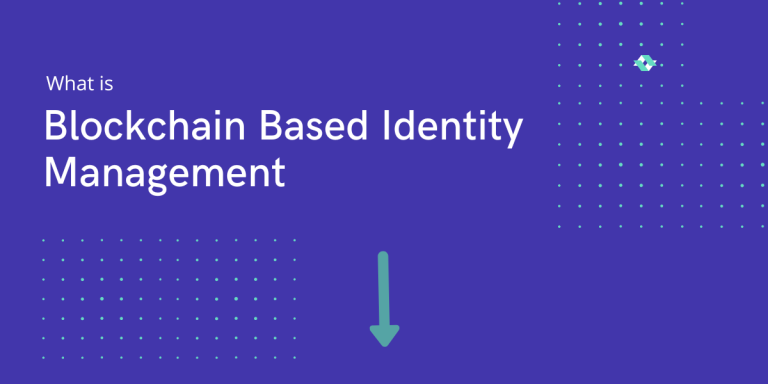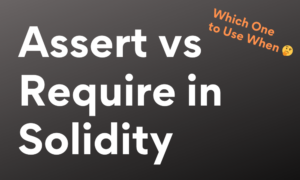Identity management is the process of ensuring that individuals and organizations are able to authenticate and authorize access to digital resources. In other words, it is a system that keeps track of who is who and what they are allowed to do.
In this article, let’s take a look at what identity management is, how we can use blockchain to optimize it, and what are some of the benefits and drawbacks of using such a system.
Also read: How Blockchain Is Changing Money and Business in 2022?
What is identity management?
Identity management is a security measure that is meant to ensure that only authorized users have access to sensitive data and systems. Such systems have three components:
- Identification: This is the process of uniquely identifying users. This can be done through something like a username or biometric data.
- Authentication: This is the process of verifying that the identification is correct. This is usually done with a password or PIN.
- Authorization: This is the process of granting access to resources. This can be done through permissions or access controls.
There are many different ways to implement identity management, but blockchain technology has the potential to revolutionize the way it is done.
Use-cases of identity management
There are many different use-cases for identity management, but some of the most common ones include:
- Access control: granting or denying access to digital resources based on an individual’s identity
- Single sign-on: allowing individuals to use a single set of credentials (e.g. username and password) to access multiple digital resources
- Fraud detection: using identity information to detect and prevent fraud
- Compliance: ensuring that individuals and organizations meet all the necessary requirements to access certain digital resources
How can blockchain be used for identity management?
There are many different ways that blockchain can be used for identity management, but some of the most common ones include:
1. Storing identity data on the blockchain
One of the most obvious ways to use blockchain for identity management is to simply store identity data on the blockchain. This has the benefit of making the data tamper-proof and publicly verifiable, but it also has the drawback of making the data immutable (i.e. once it’s on the blockchain, it can’t be changed).
2. Blockchain-based login credentials
Another way to use blockchain for identity management is to use blockchain-based credentials. With this approach, individuals and organizations can create digital credentials that can be used to authenticate and authorize access to digital resources. This has the benefit of making the credentials tamper-proof and publicly verifiable, but it also has the drawback of making them immutable (i.e. once they’re on the blockchain, they can’t be changed).
3. Blockchain-based identity verification
A third way to use blockchain for identity management is to use blockchain-based identity verification. With this approach, individuals and organizations can verify the identity of other individuals and organizations using the public ledger. This has the benefit of making the process more transparent and tamper-proof, but it also has the drawback of making it slower and more expensive.
Benefits of using blockchain for identity management
There are many benefits of using blockchain for identity management, but some of the most important ones include:
- Increased Security: One of the main advantages of using blockchain for identity management is that it significantly increases security. With traditional centralized systems, there is a single point of failure which can be exploited by hackers. However, with blockchain, each user has their own copy of the ledger which is updated and verified through the consensus process. This makes it much more difficult for hackers to tamper with the data and makes it more secure overall.
- Reduced Costs: Another benefit of using blockchain for identity management is that it can help to reduce costs. With traditional systems, businesses have to incur the costs of maintaining centralized databases and hiring security personnel to protect them. However, with blockchain, there is no need for centralized infrastructure as each user maintains their own copy of the ledger. This can lead to significant cost savings for businesses.
- Improved Efficiency: Finally, blockchain-based identity management systems can also improve efficiency. With traditional systems, businesses often have to spend a lot of time and resources on verifying the identity of users. However, with blockchain, users can easily and quickly verify their identity themselves. This can save businesses a lot of time and money in the long run.
Drawbacks of using blockchain for identity management
There are also some drawbacks of using blockchain for identity management, which include:
- Immutability: The immutability of blockchain means that once data is entered into the blockchain, it cannot be changed or deleted. This could be a problem if an individual’s identity is somehow compromised, as their data would be permanently stored on the blockchain.
- Scalability: Blockchain is not yet scalable, meaning that it can only handle a limited amount of transactions at any given time. This could be a problem for identity management systems, as they would need to be able to handle a large number of transactions (potentially millions or billions) in order to be effective
Conclusion
Blockchain-based identity management is a promising new approach that has the potential to improve the security, transparency, and cost-effectiveness of identity management. However, it also has some drawbacks that should be considered before adoption.
There are have been large scale adoptions of blockchain for identity management like the ADHAAR system in India which is one of the largest blockchain project yet.





